Spiritual landmarks of Izumo, a place where deities bring good fate and fortune.
audio tourism guides for the Izumo area
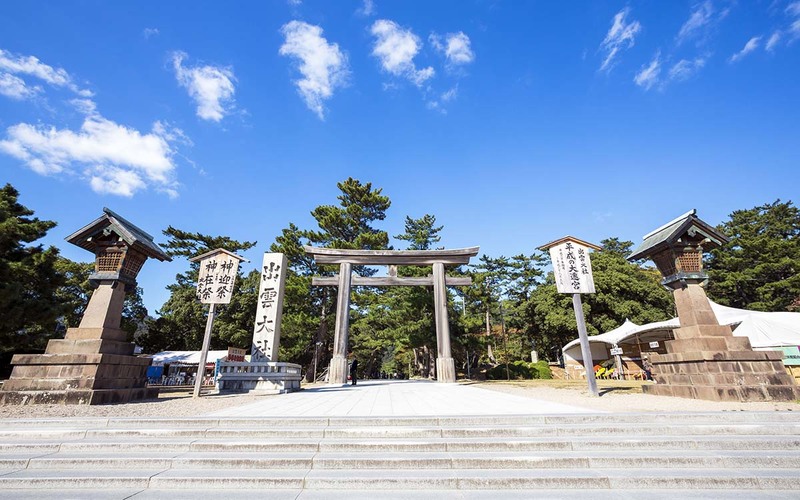
Izumo Area Guide
Izumo Oyashiro is a historic shrine that appears in Japan’s oldest history books "Kojiki” and “Nihon Shoki.” The shrine is dedicated to worship many deities such as the Okuninushi no Okami, and therefore is widely known as place with great spiritual energy. The main hall is a national treasure, and the main building and torii gates are designated as important cultural assets of the country. A town has developed around the shrine, and visitors can enjoy local cuisine such as Izumo soba. Around the Izumo Oyashiro Shrine, there are many legendary landmarks such as Susa Shrine and Inasanohama Beach that are historic places of worship. There are also many areas where you can enjoy the San-in Region’s nature such as lakes, parks and bays.
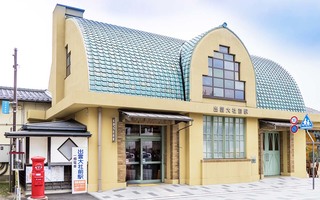
A Izumo Taisha-mae Station

B Roadside Station Taisha Goen-Hiroba
C Izumo Oyashiro
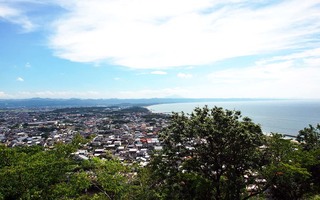
D Honozan Park
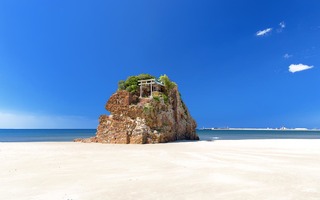
E Inasanohama Beach

F Former Taisha Station
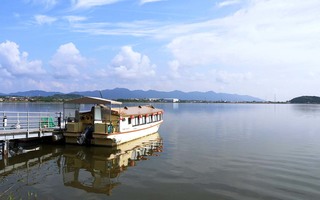
G Lake Jinzai
A
Izumo Taisha-mae Station

Izumo Taisha-mae Station is the last stop on the Taisha line of the Ichibata Electric Railway in Izumo City of Shimane Prefecture. It opened in 1930 as the nearest station to the Izumo Oyashiro Shrine, and was designated as a registered cultural property of the country in 1996. A multipurpose space called "Matchmaking Square" houses many cafes and restaurants. Because Shimane prefecture is famous for forestry, there is also a section that is dedicated to introducing Shimane’s lumber. There are ryokan inns and restaurants near the station, and the Izumo Oyashiro Shrine is located north of the station. There is also Goen Yokocho alley and the Kanmon-dori tourist information center on the way to the shrine, helping visitors easily explore the area.
B
Roadside Station Taisha Goen-Hiroba

Taisha Goen-Hiroba station is a road-side station located along the river, half way between Izumo Taisha-mae Station and the Former Taisha Station. This building with a Japanese Shinto-style architecture has a fan and spear on top of the roof. This symbol of good luck makes the building easy to spot from a distance. Inside the building, there are various materials related to the culture and traditional arts of the city of Taisha-cho and the traditional event "Kitcho Shinji", which is during the first three days of January. In Kitcho Hall, there are many attractions such as an installation of light and sound that allows you to experience a dialogue with the deities, a tourism information center, rest areas, hot spring stands, and a bicycle rental facility. At the entrance of the building there is a stamp of "Shimanekko", which is a local mascot of Shimane prefecture.
C
Izumo Oyashiro
Izumo Oyashiro is a shrine located in Izumo City in Shimane Prefecture, whose name appeared in the oldest history book in Japan, "Kojiki". In modern times the shrine is known as a place with spiritual energy for good fortune and matchmaking. The main hall, built in 1744, is dedicated to “Okuninushi”, the divinity of “kuni-yuzuri” which means “Transfer of Land”. In 2008, the building was renovated and the deities for transferred for the first time in 60 years and today, this national treasure still attracts many worshippers. Large artifacts, such as the great sacred shrine rope and the bronze statue of the Okuninushi divinity make this shrine distinct from typical shrines, and are said to symbolize the benevolence of Okuninushi. Rituals are held 72 times per year which also make this shrine unique, such as the "Kamimukae Shinji" in October, and the "Enmusubi Taisai" festival in late November.
D
Honozan Park

The Honozan Park was completed in 1955, and it overlooks the streets of the city of Taishamachi and the Inasanohama Beach that are mentioned in mythical legends. Whether it be during sunny daytime or sunset, this park is known for its beautiful scenery, and visitors can access it by car as well as on foot. The name “Honozan”, or mountain of divine dedication, originates from a pilgrim called “Kaikokuhijiri” who buried containers with 66 Buddhist scriptures around the country in the Middle Ages. On the hillside, there is the “Okuni” tower that honors Izumono Okuni, a female entertainer who was active in the Azuchi-Momoyama period. At the summit, 75 meters above sea level, there is the "Izumo Teono” shrine that worships “Taokihoi no Mikoto”, a deity of the crafts, and the guardian of architecture and construction, where you can get a great view of the autumn leaves during fall.
E
Inasanohama Beach

Inasanohama beach in Izumo City, Shimane is located 1 kilometer west of Izumo Taisha shrine, and has been selected as one of the "100 best beaches in Japan." It is a mythical land where many Japanese legends are passed down, such as the legends "Kunimamori" and "Kunibiki." It is also where the myth of "The Hare of Inaba," or “Inaba no Shirousagi” takes place. One legend says that the gods of heaven and earth peacefully negotiated to erect the Izumo Oyashiro Shrine, and the “Byobu Iwa” cliff is said to be where the negotiation took place. Furthermore, in October, Shinto priests conduct the “Kamimukae” ceremony to welcome all of the deities in Japan. It is therefore known as one of the strongest Power Spots in Japan.
F
Former Taisha Station

The Former Taisha station is a Japanese-style station building that opened in 1912, and operated until 1990 when the JR Otsu line became discontinued. The building, platform, railroad tracks, and traffic lights were all left intact, and this beautiful Taisho era architecture, with its great attention to detail, was designated as an important cultural property of the country in 2004.
As a gateway to the Izumo Oyashiro Shrine, this building is visited by many people, and the “Izumo” direct express train to and from Tokyo operated for 10 years from 1951 to 1961.
The interior of the station is spacious, with nostalgic woodwork waiting rooms and a VIP room that the royal family once used.
Everything is kept as it was, which makes visitors feel like they’ve travelled back to the Taisho and Showa eras.
Contrasting with the Izumo Taisha-mae Station of the Ichibata Electric Railway, which adopted a modern, Western architecture style, both stations are designated as a Heritage of Industrial Modernization by the Japanese Ministry of Economy, Trade, and Industry.
G
Lake Jinzai

Lake Jinzai is located in the western part of Izumo, Shimane prefecture, and is the largest brackish water lake in the country with the 6th largest catch of clams in Japan. This historic lake, which appears in "Izumo no Kuni Fudoki " written around the year 700, is also known as a fishing spot for eel and carp. There is a 2.5-kilometer hiking path around the lake, where you can observe wild birds and fish. The "Lake Jinzai Pleasure Boat" is a houseboat equipped with eight tables where you can enjoy sightseeing while eating local cuisine using eel and clams from Lake Jinzai. On the west side of the lake there is the “Koryo Onsen,” so you can stop by the hot spring after enjoying the scenery of Lake Jinzai.